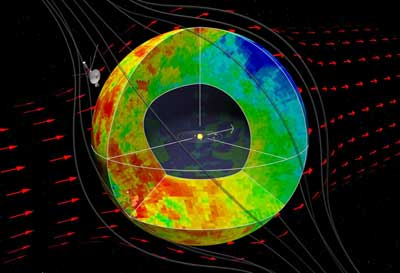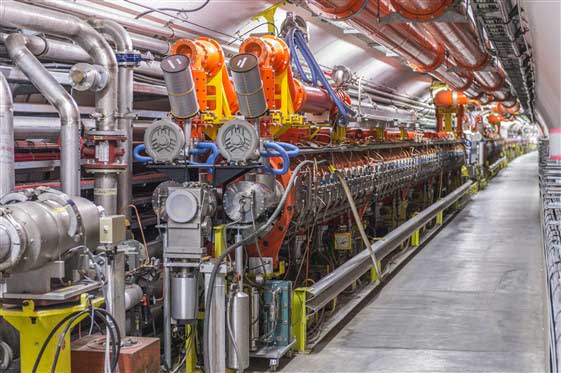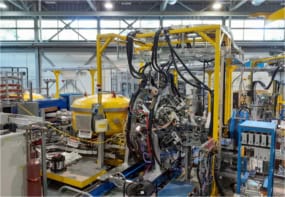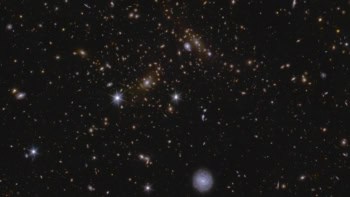Flash Physics is our daily pick of the latest need-to-know developments from the global physics community selected by Physics World‘s team of editors and reporters

Cassini reveals new shape to Sun’s magnetic influence
As NASA’s Cassini spacecraft begins its final series of orbits around Saturn, scientists report that it has helped identify an alternate view of the Sun’s magnetic fields. To date, it was thought that the Sun’s heliosphere – the bubble of the Sun’s magnetic influence – had a comet-like shape because of the solar system’s movement through interstellar space. Now, however, Kostas Dialynas of the Academy of Athens in Greece and team suggest a different picture based on data from Cassini, Voyager and the Interstellar Boundary Explorer – the heliosphere may have rounded ends, making it almost spherical. Although Cassini’s main role over the last decade has been to explore Saturn’s system, it has measured fast-moving neutral atoms related to the heliosphere. As charged particles from the inner solar system travel through the heliosphere boundary, some exchange electrons with neutral gas atoms from the interstellar medium. Some of these are then bounced back into the inner solar system as fast-moving neutral atoms. Cassini’s measurements have revealed that particles coming from the heliosphere’s supposed comet-like tail behave almost exactly as those coming from the nose, suggesting it is much more rounded and symmetrical than a comet’s shape. The researchers hope the data, presented in Nature Astronomy, will provide an insight into the interstellar boundary that helps shield Earth from cosmic rays. Meanwhile, after over a decade of investigating Saturn and its moons, Cassini has completed its final close approach of Titan. On 26 April the spacecraft will begin a series of 22 dives between Saturn’s rings before its “Grand Finale”, where it will plunge into the planet’s atmosphere.
Committee gender quotas under the spotlight in new study

Introducing gender quotas to scientific search committees could have a detrimental effect for female candidates, according to a new study by economists at Aalto University in Finland. By looking at 100,000 applications to associate and full professorship positions in 16 academic fields in Italy and Spain, the researchers found that a woman’s chances of being hired decreased when a female researcher sat on the scientific hiring committee. Led by Manuel Bagues at Aalto University, the study discovered that male evaluators become less favourable towards female candidates as soon as a female evaluator joins the committee. They also found that female evaluators are also not significantly more favourable towards female candidates. According to Bagues, one explanation for this effect could be that in all-male committees evaluators may feel that they have a “moral obligation to worry about sexism and therefore seek to overcome it by expressing more positive – and perhaps less discriminatory – views about female candidates”. “When there are women on a committee, men may feel licensed to express more honest opinions about female candidate,” he adds. The study is presented in American Economic Review.
CERN gears up for LHC restart

CERN’s Super Proton Synchrotron (SPS) has begun circulating proton beams for the first time this year as the lab gears up to restart the Large Hadron Collider (LHC) following the winter shutdown. The start-up of the 7 km-circumference SPS, which feeds the LHC with high-energy protons, means that all four parts of CERN’s accelerator chain – Linear Accelerator 2, the Proton Synchrotron Booster, the Proton Synchrotron and the SPS – are now in operation. The SPS was also upgraded during the shutdown, which involved the installation of a new beam dump. The LHC is now expecting to begin proton–proton collisions within the next few weeks.
- You can find all our daily Flash Physics posts in the website’s news section, as well as on Twitter and Facebook using #FlashPhysics.



